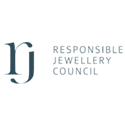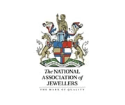Gold has been shining brighter than usual in the financial markets, hitting a record high last week. This surge comes in the wake of Federal Reserve policymakers’ indications that interest rates might be reduced by three-quarters of a percentage point by the end of 2024. This move is anticipated despite the challenges posed by recent high inflation readings, a scenario that places gold in a particularly favourable light as a safe haven and an investment.
All eyes on the PCE Price Index
The PCE Price Index, as published by Bureau of Economic Analysis
The focal point of the current market dynamics is the forthcoming release of the Personal Consumption Expenditures (PCE) Price Index. This indicator is pivotal for both the Federal Reserve in steering monetary policy and investors in gauging the health of the U.S. economy. The expectation of further disinflation in the U.S., which could alleviate concerns over escalating prices or a re-anchoring of inflation at a higher plateau, poses a bullish scenario for gold. The PCE Index is anticipated to have risen by 0.3% in February, maintaining an annual pace of 2.8%.
The Personal Consumption Expenditures (PCE) Price Index is a crucial economic indicator used to measure the average changes in prices paid by consumers for goods and services over time. It is published by the Bureau of Economic Analysis (BEA) and is closely watched by economists and policymakers, particularly the Federal Reserve, as it provides a comprehensive snapshot of inflationary trends within the U.S. economy. Unlike the Consumer Price Index (CPI), the PCE Index accounts for changes in consumer behaviour and has a broader scope in terms of the goods and services included, making it a more flexible gauge of inflation. This flexibility and the index’s ability to reflect shifts in consumer spending patterns render it indispensable for the Fed in setting monetary policy, as it aims to maintain price stability and support economic growth. The significance of the PCE Index lies in its influence on decisions regarding interest rates, which affect the entire economy, from the stock market to the average consumer’s borrowing costs.
Anticipation for Interest rate cuts
Interest rate cuts
Traders, with a keen eye on future monetary policy shifts, are betting on a 70% probability of the Federal Reserve commencing rate cuts as early as June, as inferred from the CME Group’s FedWatch Tool. Lower interest rates directly impact the opportunity cost of holding non-yielding assets such as gold (bullion) by making these assets more attractive relative to interest-bearing investments. When central banks reduce interest rates, the return on savings accounts and fixed-income investments like bonds typically decreases. This reduction in potential earnings from interest-bearing assets lowers the opportunity cost of investing in or holding onto assets that do not offer a yield, such as gold.
Essentially, in a low-interest-rate environment, the foregone interest income from not investing in yielding assets is minimized, making gold a more appealing investment choice. Investors might turn to gold as a safe haven or for portfolio diversification, as the relative attractiveness of holding such non-yielding assets increases when the alternative options provide diminished returns. This dynamic underscores the inverse relationship between interest rates and the allure of gold and similar non-yielding investments.
Gold is not a house of cards built on the hope of rate cuts
Unlike a house of cards, Gold’s prices have stablised and are built on a strong foundation of investor sentiment
Even if the PCE index’s unveiling does not fully meet investor expectations, or if there’s merely a single rate cut within the year, the allure of gold persists.
The metal’s gains since mid-February are not solely attributable to speculations around interest rates but are also supported by long standing factors. These include geopolitical tensions in the Middle East and Ukraine, the aftermath of a terrorist attack in Moscow, global anxieties surrounding the contentious U.S. election slated for later this year, and notable wholesale gold purchases by central banks, particularly led by China.
Moreover, the dollar index saw a minor dip of 0.3% against a basket of currencies, following the People’s Bank of China’s setting of a stronger-than-anticipated reference rate for the yuan. This development makes gold more affordable for holders of other currencies, further boosting its appeal.
The People’s Bank of China
When the People’s Bank of China sets a stronger-than-anticipated reference rate for the yuan, it can significantly increase the appeal of gold on the global market. A stronger yuan makes the dollar relatively weaker in comparison, which in turn makes dollar-denominated assets like gold more affordable for investors holding other currencies. This affordability boosts the demand for gold, driving up its price and appeal as an investment. Moreover, a stronger yuan reflects the Chinese central bank’s confidence in the country’s economic stability and growth prospects, potentially influencing global economic sentiment. Investors often see gold as a hedge against uncertainty and inflation, so any shift that affects major currencies and global economic outlook can lead to increased interest in gold as a safe-haven asset. In essence, the People’s Bank of China’s decision can ripple through the global financial system, enhancing gold’s allure as both a protective and speculative asset. In this way, gold continues to be a unique asset, like a double edged sword.
In essence, gold continues to hold its ground as a sanctuary for investors, drawing strength from a combination of reduced interest rate prospects, geopolitical uncertainties, and its intrinsic value as a hedge against inflation. As the market anticipates the PCE Index release, the spotlight remains on gold, underscoring its significance in the global economic landscape and investor portfolios.
Recent articles
“The El Dorado of the Seas”: The remaining allure of shipwrecks and lost treasure
Seasonal Patterns in Gold Investment
The Role of Gold in Sanctions and Economic Warfare
The Gold Recycling Boom: Sustainability in the Gold Industry
Gold and Geopolitics: How Global Tensions Influence Gold Prices















